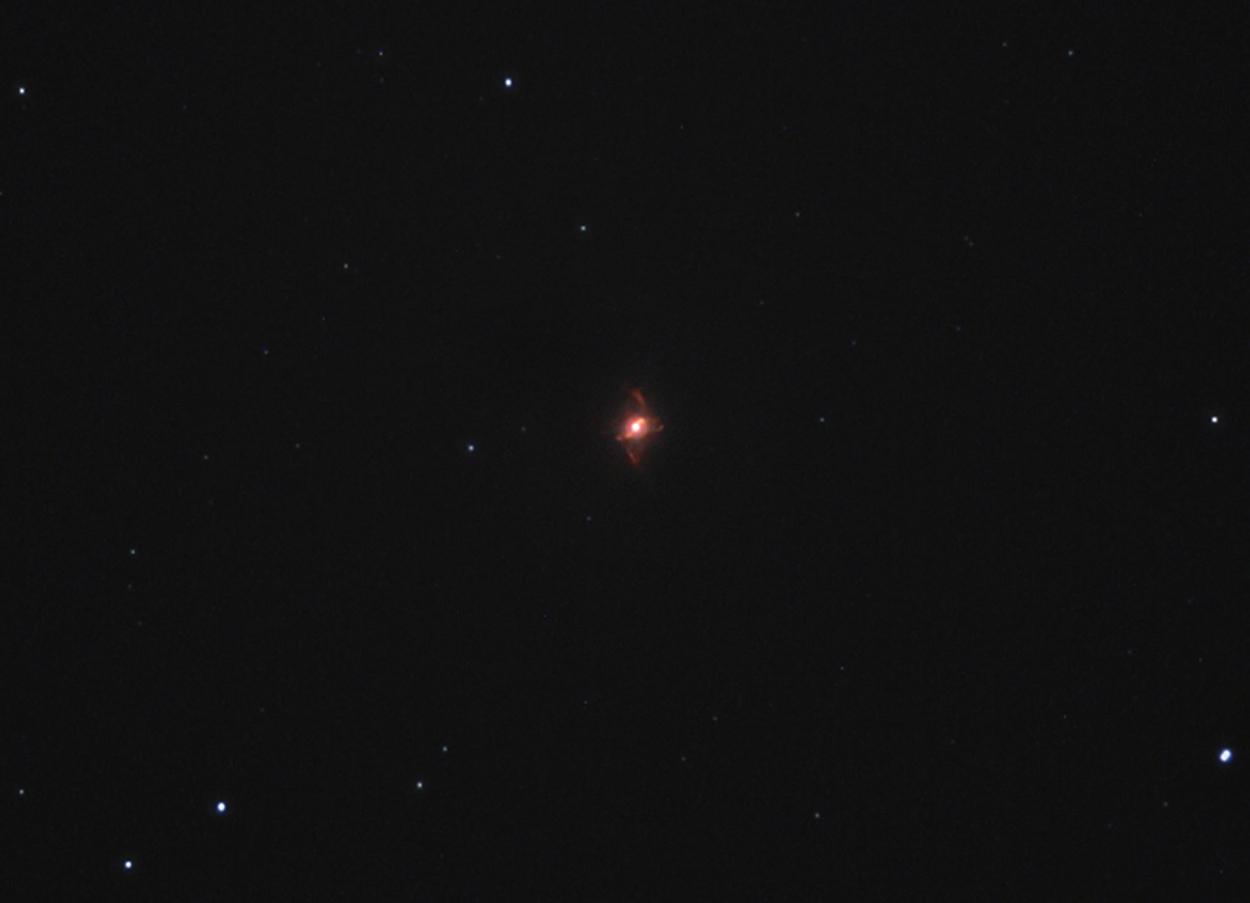
| HOME |
R AQUARII & CEDERBLAD 211
Variable Star and Nebulosity in Aquarius
(ra: 23:43.5 / dec -15:17)

August 2010, Home Backyard in Martinez
Buenos Aires, Argentina
DATA
TYPE: Variable Star with nebulosity
VISUAL MAGNITUDE: 5.8 to 12.4
SIZE: 2 x 1 arc minutes for CED 211
DISTANCE: 643 light years
OBJECT DESCRIPTION AND IMAGE SESSION
R Aquarii is an example of a class of double stars called symbiotic stars. In this object, it is speculated that the outburst occurs near or on the surface of a hot, compact, probably very old star that has already shed its outer layers to become a white dwarf. This star is violently reactivated by large quantities of fresh material falling onto it from a very nearby stellar companion. Thus fortified with fresh fuel, the white dwarf experiences an extremely rapid burst of nuclear burning akin to a hydrogen bomb. The energy released powers the ejection of a good part of the outer layers of the star at speeds of up to several hundred thousand kilometres per hour. (*)
The nebulosity around the star is called Cederblad 211. Very faint. Almost no data from the RGB and L channels.
(*) Hubble Site - News Center http://hubblesite.org/
IMAGE INFORMATION
SCOPE: Celestron SCT 8" working around 6.7
SKY CONDITIONS: Regular. Transparency bad.
CAMERAS: QSI 583 WS -20Cº
FILTERS: Astronomik Type 2, Ha 6nm
EXPOSURES: LHaRGB (20,30,20,20,20) bin 2x2
GUIDING: William Optics ZenithStar 66 f6. Starlight Xpress Lodestar Camera. AA 3.71 Control Camera Plug-in
PROCESSING: No darks, nor flats, nor offsets. Images Plus (Sigma Median Combination) CCD Sharp Richardson Lucy Deconvolution Photoshop CS